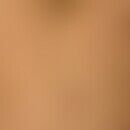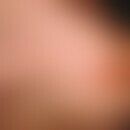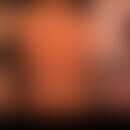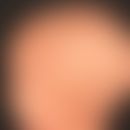Synonym(s)
HistoryThis section has been translated automatically.
Damsté and Prakken, 1954
DefinitionThis section has been translated automatically.
Rare, autosomal dominant (recessive) inherited, permanent, diffuse hairlessness(atrichia), often with absence of nails. Slightly more than 50 families are described.
You might also be interested in
EtiopathogenesisThis section has been translated automatically.
For AUC, as well as for Papular Atrichia (APL), mutations in the so-called hairless gene (HR gene) located on chromosome 8p21-p22 have been detected. To date, >50 mutations have been detected. Another gene also involved in the hair cycle is the vitamin D receptor (VDR) gene, which is localized on chromosome 12q12-q14. Mutations of this gene can lead to phenocopy of APL (Betz RC 2014).
LocalizationThis section has been translated automatically.
ClinicThis section has been translated automatically.
The hair is missing at birth or falls out shortly thereafter, and the follicle openings are detectable. Eyelashes, eyebrows and nails may also be missing. Conspicuous are follicularly bound, papular lesions, which are typical for the clinical picture in addition to atrichia: These are located periorbital, in the neck and in the knee region.
HistologyThis section has been translated automatically.
Differential diagnosisThis section has been translated automatically.
TherapyThis section has been translated automatically.
Note(s)This section has been translated automatically.
LiteratureThis section has been translated automatically.
- Ahmed MS et al (2013) Identification of novel mutation in the HR gene responsible for atrichia with papular lesions in a Pakistani family. J Dermatol 40: 927-928
- Bansal M et al (2011) Atrichia with papular lesions. Int J Trichology 3:112-114.
- Betz RC (2014) Alopecia and hyoptrichosis in childhood. Dermatologist 56: 520-526
- Cichon S et al (1998) Cloning, genomic organization, alternative transcripts and mutational analysis of the gene responsible for autosomal recessive universal congenital alopecia. Hum Mol Genet 7: 1671-1679.
- Damste TJ et al (1954) Atrichia with papular lesions; a varaant of congenital ectodermal dysplasia. Dermatologica 108: 114-121
- Klein I et al (2002) A novel missence mutation affecting the human hairless thyroid receptor interacting domain 2 causes congenital atrichia. J Invest Dermatol 119: 920-922
- Liu L et al (2013) Hairless is a histone H3K9 demethylase. FASEB J. 28:1534-1542
- Sprecher E et al (1997) Atrichia with papular lesions resulting from a nonsense mutation within the human hairless gene. J Invest Dermatol 113:687-690
- Thompson CC, Bottcher MC (1997) The product of a thyroid hormone-responsive gene interacts with thyroid hormone receptors. Proc Natl Acad Sci 94: 8527-8532.
- Trüb RM et al (1998) Mutation of the human hairless gene in Atrichia universalis. Dermatologist 49: 687-689
- Zlotogorski A et al (2003) Clinical and pathological correlations in genetically distinct form of atrichia. Arch Dermatol 139: 1591-1596
Incoming links (6)
Atrichia congenita diffusa with vitamin d-dependent rickets; Atrichia congenita universalis; Atrichia with papular lesions; Atrichie; Eye diseases, skin changes; HR gene;Outgoing links (7)
Alopecia areata diffusa; Atrichia congenita diffusa with vitamin d-dependent rickets; Atrichia congenita universalis; Atrichie; Hairless gene; HR gene; Light protection;Disclaimer
Please ask your physician for a reliable diagnosis. This website is only meant as a reference.






